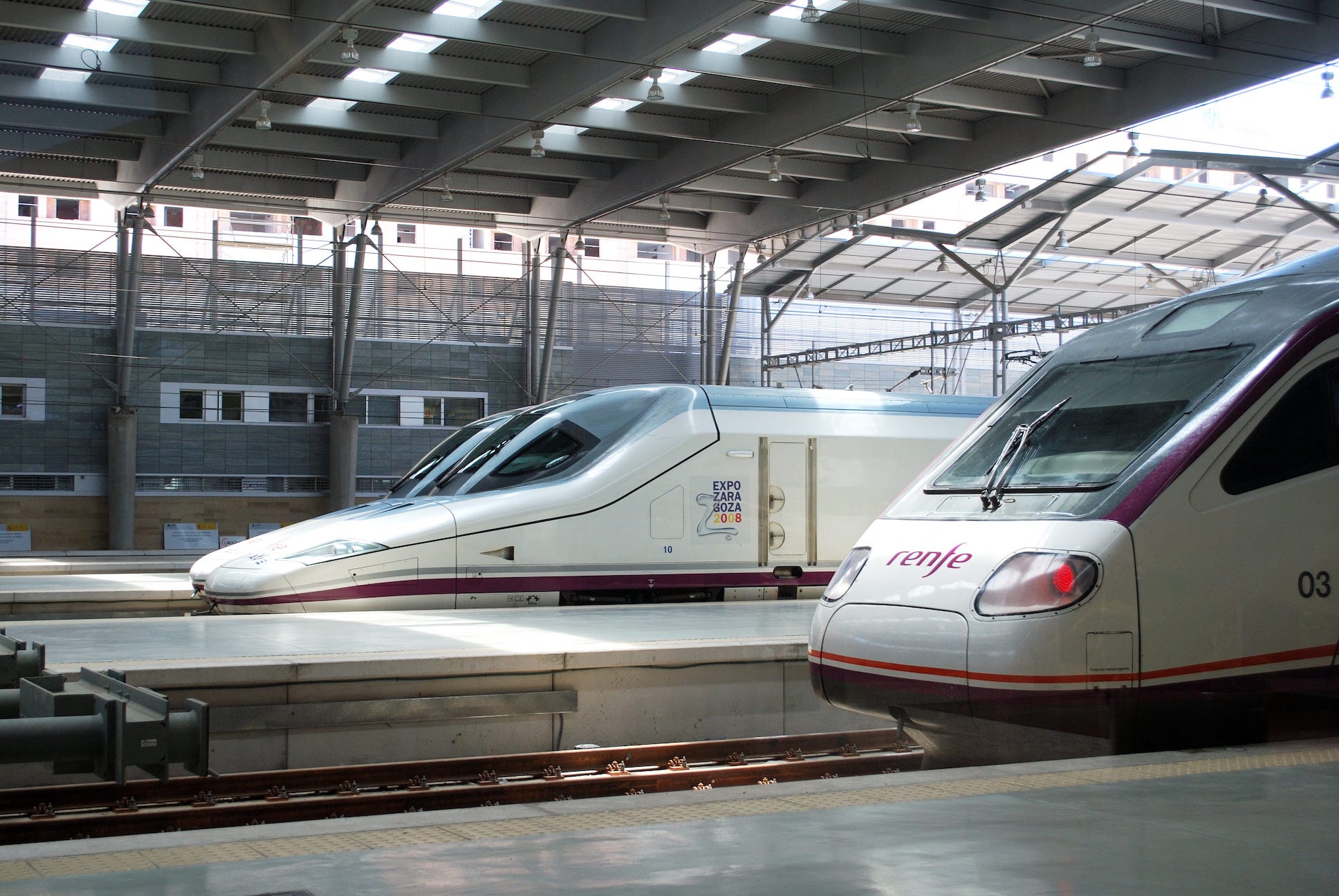High Speed Train Travel - Spain Leads Europe

High-speed rail (HSR) is a critical component of modern transportation infrastructure, offering fast, efficient, and environmentally friendly travel. Various countries have developed extensive HSR networks, with notable differences in length, development plans, and operational characteristics. Spain is at the forefront of HSR development. Only one country in the world has a more extensive network: China.
Here’s a comparison between Spain and some other European countries:
- Spain
- Current Length: ~3,330 km
- Key Lines: Madrid-Barcelona, Madrid-Seville, Madrid-Valencia
- Development Plans: Expansion towards Galicia, Basque Country, and along the Mediterranean corridor.
- Features: Spain boasts one of the largest HSR networks in the world, emphasising connectivity between major cities and regions.
- France
- Current Length: ~2,800 km
- Key Lines: Paris-Lyon, Paris-Bordeaux, Paris-Strasbourg
- Development Plans: New lines to cities like Toulouse and improvements to existing routes.
- Features: The TGV (Train à Grande Vitesse) network is renowned for its speed and efficiency, with extensive coverage radiating from Paris.
- Germany
- Current Length: ~1,571 km
- Key Lines: Frankfurt-Cologne, Berlin-Munich, Hamburg-Frankfurt
- Development Plans: Expansion of the network and enhancements to increase speeds.
- Features: The ICE (InterCity Express) network connects major cities, with a focus on high-speed travel and integration with regional rail.
- Italy
- Current Length: ~1,467 km
- Key Lines: Milan-Rome-Naples, Turin-Milan-Venice
- Development Plans: Extensions to the south and improvements in the northern corridor.
- Features: The Frecciarossa trains provide high-speed services, emphasising comfort and efficiency.
- Belgium
- Current Length: ~360 km
- Key Lines: Brussels-Paris, Brussels-Amsterdam
- Development Plans: Enhancements to existing lines and better integration with neighbouring countries.
- Features: The Thalys and Eurostar services offer international HSR connectivity.
- Netherlands
- Current Length: ~120 km
- Key Lines: Amsterdam-Rotterdam, Amsterdam-Brussels
- Development Plans: Plans to increase domestic high-speed connections.
- Features: The HSL-Zuid line connects major cities within the Netherlands and extends to Belgium.
- Other EU Countries: Countries like Austria, Sweden, and Poland have smaller HSR networks, with ongoing projects aimed at expanding their high-speed capabilities.
And a comparisons with some Non-EU Countries:
- United Kingdom
- Current Length: ~110 km
- Key Lines: London-Channel Tunnel (HS1)
- Development Plans: HS2 (London-Birmingham-Manchester-Leeds), expected to significantly expand the network.
- Features: HS2 aims to enhance north-south connectivity, reducing travel times and increasing capacity.
- United States
- Current Length: ~735 km (Acela Express in the Northeast Corridor)
- Key Lines: Washington D.C.-New York-Boston
- Development Plans: California High-Speed Rail project (under construction), Texas Central Railway.
- Features: The U.S. has limited HSR infrastructure, with significant plans but slow progress.
- Japan
- Current Length: ~3,041 km
- Key Lines: Tokyo-Osaka (Tokaido Shinkansen), Tokyo-Aomori (Tohoku Shinkansen)
- Development Plans: Chuo Shinkansen (Maglev), extending high-speed services to more regions.
- Features: The Shinkansen network is highly developed, renowned for its punctuality, speed, and safety.
- China - the world leader
- Current Length: ~38,000 km
- Key Lines: Beijing-Shanghai, Beijing-Guangzhou, Shanghai-Kunming
- Development Plans: Continued expansion, aiming for 70,000 km by 2035.
- Features: China has the largest HSR network globally, with rapid expansion and high-speed connectivity across vast distances.


